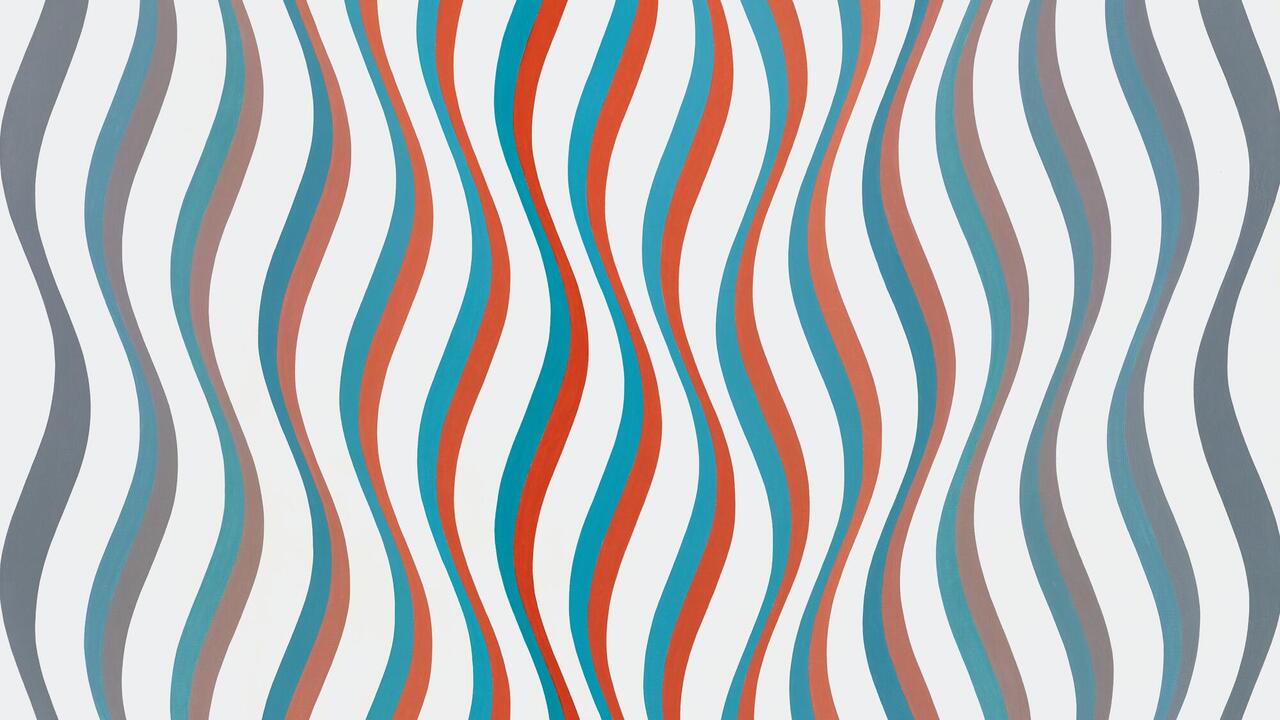City Limits
Eyes fixed in the distance, sunglasses in hand, a girl looks over her shoulder. Her features are defined with the bright clarity of an expensive television. She fades after 20 seconds, only to reappear looking forward, her face in three-quarter profile. Evidently it is summer, and the sharp light bleaches a purity into her features. Tourists linger in the city. The videos pulse lazily.
In Graham Gussin's Costa del Sol (1995), through the distended pixels of a projection, our Sega-eye view winds along a sharp black road with the deceptively clean quality of video. Ultra-smooth driving gives us a mesmeric journey along the sun-hot tarmac of southern European autoroutes. Dusty, bleached-out hills gently swing across the horizon. A sign creeps up, and then speeds past: 'Malaga' this way. Through a tunnel, the camera's auto iris reacts wildly to the darkness, artificially enhancing the gloom into a digital red hue. Bright lights streaming past us signify cars. Our pace is studied, effortless, as if following a path of sensors. (It isn't in cyberspace that we find virtual-reality: simulation is alive and well, and on the road.)
Another car thrums away to itself. Now we are out of the gallery and near the town centre, away from Beat Streuli's multiple videos and Graham Gussin's Road Movie (1996). This car is parked in what was, 25 years ago, a car park. Now the building is empty, save for a wooden chamber. In this dark interior the car is video-projected onto one wall. The title of Liz Price's work, Ticking Over... (1996), describes its activity. We know this from the sound, and from the slight haze of carbon monoxide that milks over the image. And also the smell: a toxic, industrial stench that has obviously impregnated the permeable walls during filming, which was done on site. The car may be still its black windscreen confronting us like the shades of some presidential security guard but you can be sure that it is moving inside, consuming fuel and exhaling its ill breath.
Upstairs in this dead space odd things are afoot. A small boxroom, once used to store equipment, is levitating: hovering centimetres above the concrete floor. A strip of daylight glows under the walls, which are made of vertical planks painted an artificial leaf green. This was once a functional space, but now no-one wants it so why shouldn't it float? Matthew Thompson can see no reason: it's doing no harm, amusing itself until the day it's broken up and burned to make way for the service industries. So what keeps Seam (1996) off the ground? I don't think you need to know that.
Back in the gallery, Alex Hartley demonstrates the dangers of inner city life in his two heavily-staged photographs Small Disasters Happen Daily 1 and 2 (both 1996). These depict the same two little girls in perilous situations, the kind that would be captioned 'what not to do' in home safety leaflets. There is something darkly humorous when every evil possibility manifests itself in this way. Freedom from authority is not without risks. Nearby, as if to illustrate this, there stands a low wall: Julian Opie's You have built a wall but you are worried that it's too low (1994). This is a problem in cities the nature of walls is that they always need to be higher. But this wall is low; at one foot high its crenellations and turrets are easily transgressed. Yet, the title suggests that the wall is low by placing it into the world as a real obstacle, not merely as a toy. Or at least it is not a toy in the children's-plaything sense, but in the poodle sense. Perhaps this is the wall of a middle-class liberal they don't agree with the idea of having walls, but they still want to keep others out of their garden. A compromise then: a little wall, but a wall nonetheless.
Boundaries have a lot riding on them in cities, as illustrated by Cornford & Cross's Camelot (1996), an eight foot high security fence. This work was also outside the gallery smack in the town centre. The artists erected it one weekend, isolating the three small grassed sections in the main public square. Perhaps 'public square' is too grandiose a term to describe what is, in essence, a travesty of ill-conceived traffic control measures. What should have been an open central space has been allowed to become a knot of bus lanes and bad planning. Three scrawny lumps of grass are the town's only gesture towards a public space. So the artists took that away too. And what an outcry: radio, TV, newspapers didn't it make them think! The citizens of Hanley deserve more from their town centre than three anaemic patches of grass, and it took a piece of public art to pull the problem into focus. Surely this is exactly what public art is for? Strong-willed and community-based, provoking debate and eventually understanding. It says much for those involved that they had the confidence and temerity to pull this work off. Indeed, it says much for those at Staffordshire University, particularly curator Godfrey Burke, that they could pull off a show of this ambition: almost 40 artists, eight of whom are showing site-specific works in the town, and an international conference. This is exactly the kind of thing that universities should be doing: tackling global issues in a local environment and bringing informed debate, not only to their students, but to the region as a whole.














